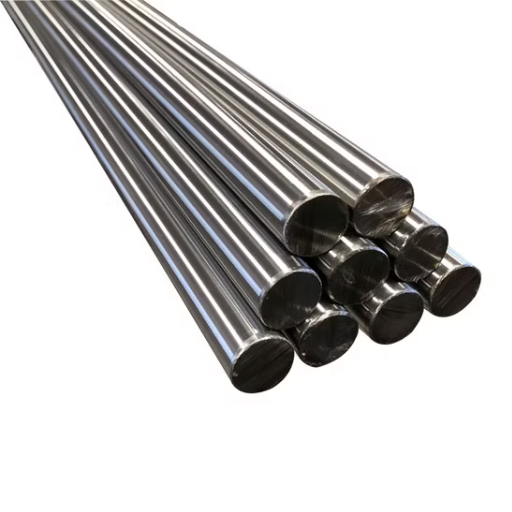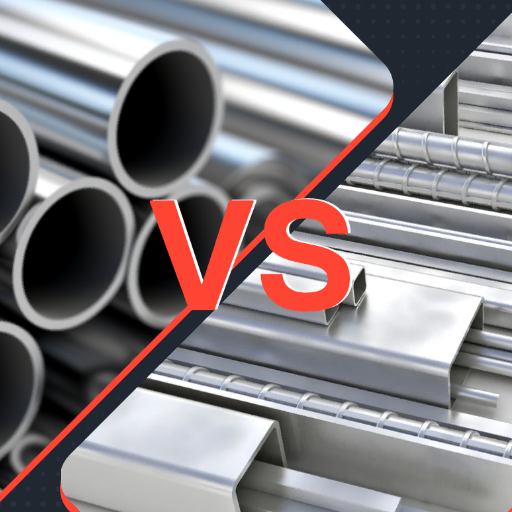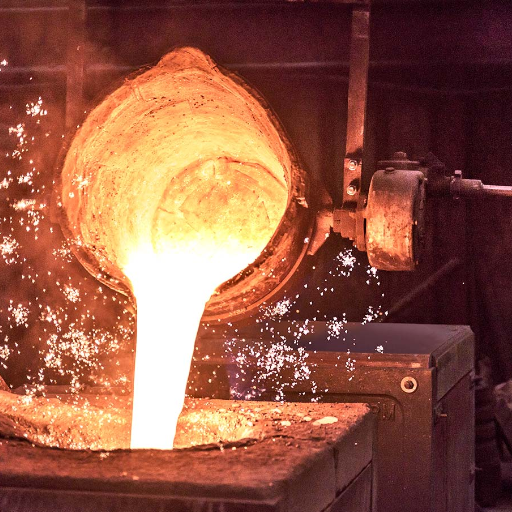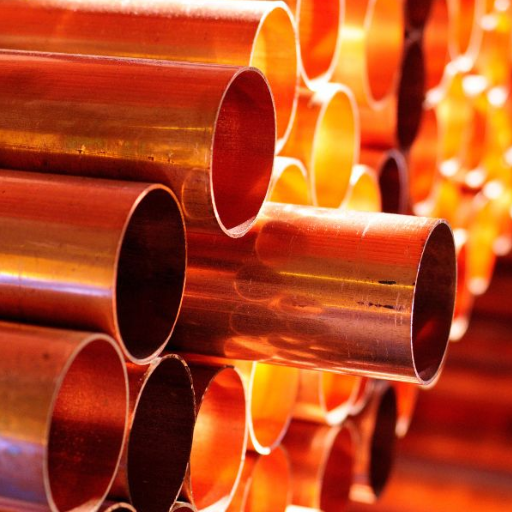When selecting stainless steel for a project, it is very important to pay attention to the distinction between T316 and T304 steel, as they determine function and durability. Both, however common, share most properties, hence their difference in slight composition, resistance, and usage. Selecting the wrong stainless steel will lead to additional costs, performance issues, or in dramatic cases, its failure. This article guides you through some major differences between T316 and T304, the chemical composition of each grade, and the distinctive characteristics that render each grade compatible with different environments. Finally, you shall come out with a clear understanding regarding which stainless steel grade best suits your needs.
Overview of Stainless Steel Alloys
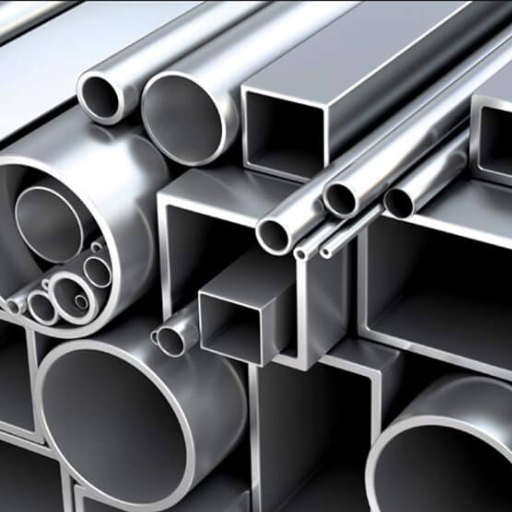
Sizing chromium as an element with minor or trace amounts of types such as zinc or silicon makes stainless steel alloys corrosion-resistant against local atmospheric conditions. These alloys are graded among different sets depending on their suitability to certain environments and applications. For example, T304, being a general-use stainless steel, has excellent corrosion resistance and versatility and is used extensively for kitchenware and architectural applications. The added molybdenum in T316 gives it added resistance to chlorides and saline environments, thus making it more suitable for marine or chemical exposure. The alloy to be chosen depends on the application demand, like exposure to moisture, salts, and extreme temperatures.
What is Stainless Steel?
1Stainless steel is a group of iron-based alloys that contain a minimum of 10.5% chromium by mass. This chromium content forms a passive oxide layer on the steel surface, which provides excellent resistance to rust and corrosion. Other alloying elements, such as nickel, molybdenum, and nitrogen, are often added to enhance specific properties, including strength, toughness, and resistance to specific environmental conditions. Stainless steel is commonly classified into five types based on its microstructure: austenitic, ferritic, martensitic, duplex, and precipitation-hardening. Each type exhibits distinct characteristics suitable for different industrial and commercial applications. This material is widely employed in sectors ranging from construction and automotive to medical devices and food processing, owing to its durability, hygienic qualities, and long lifespan.
Types of Stainless Steel
|
Type |
Key Characteristics |
Common Applications |
Corrosion Resistance |
Strength Level |
|---|---|---|---|---|
|
Austenitic |
Non-magnetic, excellent weldability |
Kitchenware, medical devices |
High |
Moderate to high |
|
Ferritic |
Magnetic, high heat resistance |
Automotive, industrial parts |
Moderate |
Moderate |
|
Martensitic |
Hard, strong, can be tempered |
Cutlery, tools, valves |
Moderate to low |
High |
|
Duplex |
Combination of ferritic & austenitic |
Chemical plants, pipelines |
Very high |
Very high |
|
Precipitation-Hardening |
High strength, heat treatable |
Aerospace, engineering parts |
High to moderate |
Extremely high |
Key Properties of Stainless Steel
- Corrosion Resistance
Stainless steel derives corrosion resistance due to the chromium content in it, which forms an inert oxide film layer on the surface of the steel. Hence, it can be used in marine, chemical, etc., environments with some hostile conditions.
- Strength and Hardness
The strength and hardness offered by stainless steel depend on the various grades. Martensitic stainless steel has a high tensile strength, and heat treatment will harden it.
- Heat Resistance
Some stainless steels are able to maintain high structural integrity under varying temperatures. Because of this characteristic, these are able to operate in heat exchangers, furnaces, and exhaust systems.
- Hygienic Properties
Stainless steel has a smooth and non-porous surface; hence, it has good hygienic properties. This property is of great value to food processing, medical equipment, and pharmaceutical equipment.
- Sustainability
Stainless steel is 100% recyclable, and recycling maintains the quality of stainless steel through multiple loops; hence stainless steel is an environment-friendly choice.
- Magnetic Behavior
304 Stainless Steel
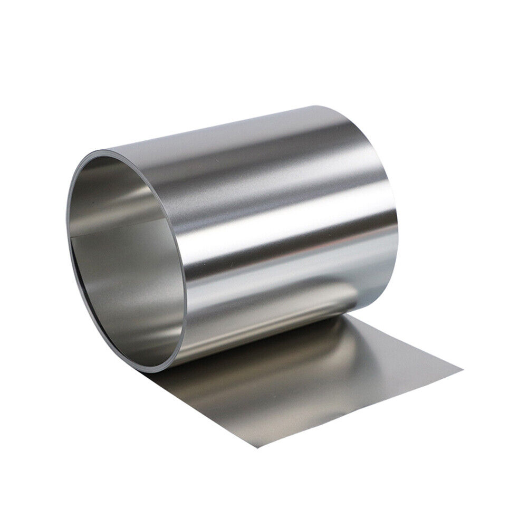
304 stainless steel is among the most prevalent grades of stainless steel for its balanced properties of strength and corrosion resistance, coupled with an inexpensive cost. It mainly contains iron, chromium (18-20%), and nickel (8-10.5%) that offer it excellent rust and oxidation resistance. Being non-magnetic (only when annealed) and highly ductile, its usages vary from kitchen appliances to chemical containers to architectural works.
304 stainless steel works mainly in environments in which endurance and ability to keep clean are essentially required: food machinery, medical apparatus, and water filtration systems. It gains secondary support for application against weak acids and alkalis.
Composition of 304 Stainless Steel
The composition is what makes 304 stainless steel so famous for corrosion resistance, strength, and mechanical properties. It mainly consists of iron with some essential alloying ingredients. Standard chemical composition includes:
- Chromium (Cr): 18.0% to 20.0%
- Nickel (Ni): 8.0% to 10.5%
- Carbon (C): Maximum 0.08%
- Manganese (Mn): Maximum 2.0%
- Silicon (Si): Maximum 0.75%
- Phosphorus (P): Maximum 0.045%
- Sulfur (S): Maximum 0.03%
- Iron (Fe): Balance
Its high chromium and nickel contents confer its corrosion resistance to many environments, including oxidizing agents and chlorides. The low carbon content also contributes to decreasing the tendency for carbide precipitation, which might occur after a welding or high heating process, so as to retain this steel’s structural integrity.
The minor amounts of manganese, silicon, phosphorus, and sulfur act in support of stabilizing the alloy and refining its mechanical properties. This very precise compositional attempt renders 304 stainless steel as an extremely versatile and reliable material for industrial and commercial applications.
Applications of 304 Stainless Steel
- Food and Beverage Industry
-
- Food Processing Equipment: Its surface is non-reactive and so is able to avoid contamination, making it an excellent surface for mixers, conveyors, and storage tanks.
- Kitchenware: Used widely for cutlery and kitchenware as it can be cleaned easily and is corrosion-resistant.
- Bottling Plants: Being highly sanitary, 304 stainless steel is preferred for pipes and containers in beverage production.
- Construction and Architecture
-
- Exterior Cladding and Façades: Aesthetics and weathering properties are well-appreciated from its side.
- Structural Components: Used under building frameworks and bridges where strength and durability are required.
- Handrails and Balustrades: Present and look beautifully polished and sport the best in places that undergo heavy use.
- Medical Industry
-
- Surgical Instruments: Non-toxic and can be sterilized to make sure that all medicine is safe to handle.
- Hospital Equipment: Includes medical carts, trays, and beds due to their resistance to frequent cleaning agents and sterilizing as well.
- Automotive and Aerospace Sectors
-
- Exhaust Systems: The high temperatures are withstood, making for a long-lasting exhaust solution.
- Aircraft Components: Strength is offered to aircraft components, such as brackets and fasteners, and they are resistant to corrosion.
- Energy and Chemical Processing
-
- Petrochemical Industry: Used in the construction of storage tanks, heat exchangers, and pipelines because of corrosion resistance and ability to resist intense pressure.
- Nuclear Power Plants: Accepted because of their ability to resist rigorous conditions and their ability to resist contamination.
Pros and Cons of 304
Pros of 304:
- Corrosion Resistance
-
- 304 stainless steel presents the ability to resist corrosion in a wide variety of environments, including attack by acids, alkalis, chloride solutions, etc. This makes it applicable in those applications where durability is demanded in difficult environments.
- 304 is capable of withstanding chloride in neutral conditions up to 200 ppm before the pitting sets in.
- High Weldability
-
- The material can be welded by most of the common fusion and resistance welding methods, so it can be adapted to many industrial processes. Usually, there is no need to undergo post weld annealing for corrosion resistance restoration.
- Good Mechanical Properties
-
- It has a tensile strength of about 515 MPa or so, with a yield strength of 205 MPa or so, which makes it suitable for serviceability for structural and mechanical purposes.
- Excellent Formability
-
- It can be used for complicated forms and drawn shapes and can be easily formed into tanks, sinks, or architectural features while severely compromising on strength or integrity.
Cons of 304:
- Susceptibility to Chloride Stress Corrosion Cracking (SCC)
-
- When exposed to higher chloride conditions for long (above 200-250 ppm, especially at elevated temperatures), SCC sets in, thus limiting the application of 304 in marine and coastal environments.
- Lower Molybdenum Content
-
- There is no molybdenum in 304 stainless steel, so the resistance to pitting in high chloride environments is less as compared to its molybdenum counterparts of 316 stainless steel.
- Magnetism in Cold-Worked Conditions
-
- Cold-working may impart magnetism to 304, which might be undesirable for applications with essential nonmagnetic properties.
- Limited High-Temperature Scaling Resistance
-
- Though it possesses high resistance up to a high temperature, resistance against scaling at prolonged exposures above 870°C will be affected, an aspect for long-term applications under intense heat.
316 Stainless Steel
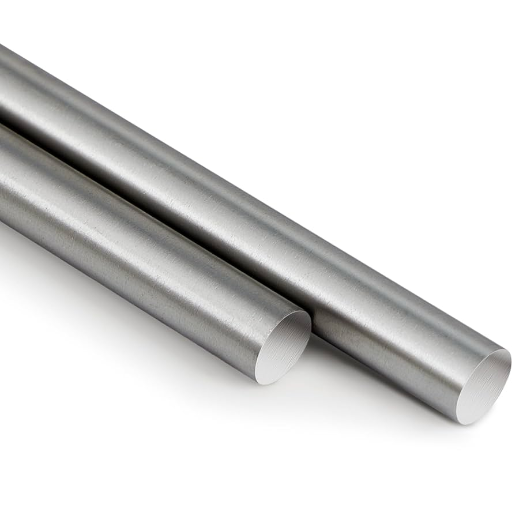
Known as an ultimate name when it comes to materials that value toughness and performance, 316 stainless steel is predicated for actualization. Due to its much better corrosion resistance, greater strength, and versatility, 316 stainless steel is the primary choice of any industry working with harsh and corrosive environments, 316 stainless steel is the primary choice for marine applications, chemical processing, and food production equipment, thus fulfilling the needs of having a lasting and trustworthy alloy.
Composition of 316 Stainless Steel
1316 stainless steel is primarily composed of iron, chromium, and nickel, with the addition of molybdenum as a distinguishing alloying element. The typical chemical composition includes approximately 16-18% chromium, 10-14% nickel, and 2-3% molybdenum. These elements collectively enhance its corrosion resistance, particularly against chloride-induced pitting and crevice corrosion.
The presence of carbon is also kept under 0.08% to reduce the formation of carbides during welding; the alloy, also in trace quantities of manganese, silicon, and phosphorus, was engineered to balance the mechanical and structural properties to stand up under demanding environments, especially the marine and chemical processing industry.
Applications of 316 Stainless Steel
- Marine Environments
In the saltwater environment, 316 stainless steel has found several applications against chloride corrosion, which include shipbuilding, offshore oil rigs, installations, and marine stainless fasteners for the fastening of hardware, propellers, and all kinds of fittings subjected to hostile environmental conditions.
- Chemical and Petrochemical Industry
Deselected due to its resistance to chemicals, storage tanks, process equipment, heat exchangers, and piping for fluids in chemical processing plants are regarded as an extra set of protective agents. It competes with acid and alkali solutions, thus giving long service time with complete safety.
- Medical Devices and Implants
316 stainless steel is also known as surgical-grade steel. This stainless steel is used in making surgical instruments and implants such as orthopedic pins and screws and stents because it is biocompatible and resistant to corrosion caused by bodily fluids.
- Food and Beverage Processing
Its ready-to-clean surface finish makes it ideal for brewing equipment, dairy tanks, kitchen equipment, and food-grade piping systems that resist organic acids.
- Pharmaceutical Industry
Pros and Cons of 316
Pros of 316 Stainless Steel:
- Corrosion Resistance
316 stainless steel resists a wide variety of corrosive media, including highly acidic and chloride-bearing media. The molybdenum in the alloy, usually present at 2-3%, offers greatly enhanced resistance to pitting and crevice corrosion compared with 304 stainless steel. This provides an opportunity for uses involving marine exposure or chemical treatment and saltwater environments.
- High-Temperature Strength
316 stainless steel is also excellently resistant at high temperatures and can be applied in environments where it is generally exposed to temperatures up to 1600°F (871°C). The austenitic structure of 316 ensures it will maintain strength at high temperatures and creep strength, thus ensuring that it will hold its structural integrity against heat stresses.
- Durability and Strength
316 has better mechanical performance with a tensile strength of about 515 MPa (75 ksi), whereas it should be put to use for demanding industrial and structural applications.
- Hygienic Properties
Cons of 316 Stainless Steel:
- Higher Cost
Molybdenum and higher nickel content construct the reason for the higher placing price of 316 steel than that of 304 steel, which can be a deciding factor in any cost-sensitive project.
- Susceptibility to Stress Corrosion Cracking (SCC)
316 stainless steel, when subjected to tensile stress, may undergo stress corrosion cracking at elevated temperatures in chloride environments. Such a possibility should be accounted for in environments in which SCC occurs.
- Density and Weight
The density of 8.0 g/cm³ makes 316 stainless steel rather heavy and poses constraints on its application in industries where weight is an issue, such as the aerospace industry and transportation.
- Limited Resistance to Strong Acids
304 vs 316 Stainless Steel
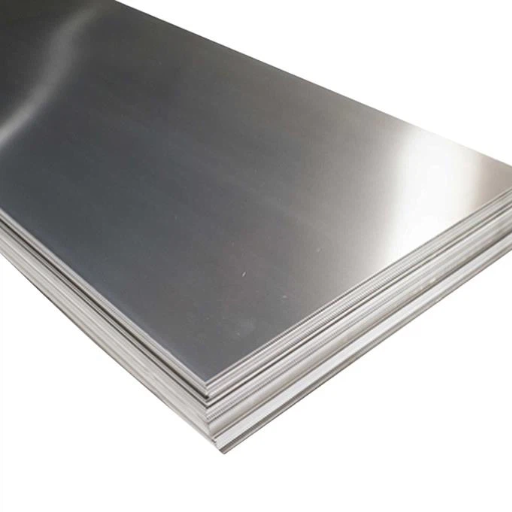
- Corrosion Resistance
Being resistant to corrosion induced by chlorides, 316 stainless steel finds its most suitable applications in marine environments or wherever an application entails exposure to saltwater. 304 stainless steel, on the other hand, finds little resistance against chlorides and may succumb to corrosion in such environments.
- Cost
Being costlier due to the larger quantity of molybdenum in stainless steel type 316, the decision as to its purchase should be weighed against the performance requirements of the specific application.
- Applications
-
- 304 Stainless Steel finds most application in indoor environments and non-corrosive environments such as kitchen equipment, furniture, and food processing.
- 316 Stainless Steel is preferable for harsher environment, including chemical processing, marine application, and medical equipment, due to its superior durability.
- Strength and Toughness
Difference Between 304 and 316
|
Property |
304 Stainless Steel |
316 Stainless Steel |
|---|---|---|
|
Composition |
Contains chromium and nickel |
Contains chromium, nickel, and molybdenum |
|
Corrosion Resistance |
Resistant to mild corrosion |
High resistance, especially to chlorides |
|
Tensile Strength |
Approximately 515 MPa |
Approximately 515 MPa |
|
Yield Strength |
Around 205 MPa |
Around 205 MPa |
|
Cost |
Lower cost |
Higher cost due to additives |
|
Magnetism |
Non-magnetic in annealed state |
Non-magnetic in annealed state |
|
Applications |
Indoor, non-corrosive environments |
Marine, medical, and chemical settings |
|
Weldability |
Excellent |
Excellent |
|
Thermal Conductivity |
Higher (16.2 W/m·K) |
Lower (14.6 W/m·K) |
|
Durability |
Moderate |
Superior, especially in harsh environments |
|
Resistance to Pitting |
Lower resistance in saltwater |
Excellent resistance in salty conditions |
|
Melting Point |
1,400–1,450 °C |
1,370–1,400 °C |
304 vs 316: Strength and Durability
Both 304 and 316 stainless steel have excellent mechanical strength properties; however, some minute but valuable distinctions set them apart from one another in practical use. Stainless steel, 304 types, generally has a slightly higher yield strength of about 215MPa compared to that of 316 MPa, or 200 under stress from deformation. On the other hand, the 316 grade manifests better tensile strength of 579 MPa and elongation, both being vital with dynamic or load-bearing applications.
More prominent is the difference in durability in adverse working conditions. Grade 316 has greater durability, as it is more resistant to some corrosive agents than 304, especially corrosive atmospheres in marine and industrial applications. This ability is endowed because of the presence of molybdenum in its alloy composition, which helps in increasing its resistance to pitting and crevice corrosion in chloride-containing environments. Grade 304 performs well in most normal situations, but prolonged exposure in a highly demanding environment, such as saltwater or chemical agents, will cause the durability of 304 to degrade to a level sufficient for working.
Choosing Between 304 and 316 Stainless Steel
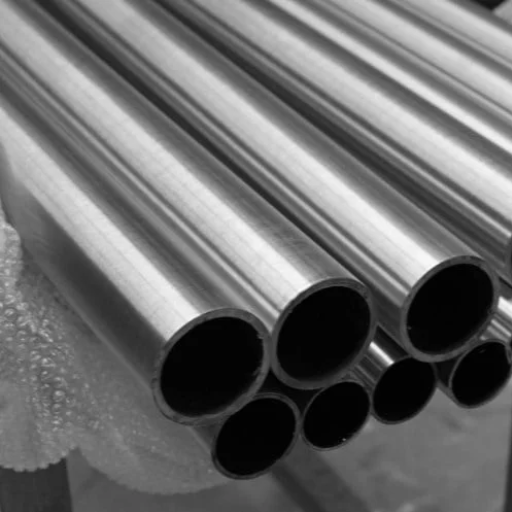
- Corrosion Resistance: 316 is the best option if the materials will be confronted with corrosive salty waters, chemical agents, or environments rich in chlorides, owing to its enhanced performance against pitting and crevice corrosion.
- Cost: In ordinary surroundings that are not corrosive, 304 is more cost-effectiveness than the other competing thickening without trade-off in strength and durability.
- Strength and Longevity: Both grades claim to have excellent strength, with 316 offering varying results as per demand over a long duration.
Analyze the environmental conditions and present constraints before choosing the correct alternative.
Factors to Consider for Your Project
- Corrosion Resistance
-
- Analyze any possible exposure of material to chloride, saltwater, or industrial chemicals.
- Example Data: Indicating that 316 stainless steel operates better in the environment where chloride concentration nears 1,000 ppm levels, whereas 304 stainless steel fits chloride levels below 200 ppm.
- Mechanical Properties
-
- Determine tensile strength, yield strength, and hardness for the expected use.
- Example Data: While 304 stainless steel has a tensile strength of approximately 73,200 psi, 316 stainless steel provides slightly less tensile strength at about 70,000 psi but compensates with better resistance at stress in extreme conditions.
- Operating Temperature Range
-
- Whether materials sustain functioning in the range of high or low temperatures without thermal fatigue or deformation.
- Example Data: Both 304 and 316 stainless steel can hold high temperatures up to 1,700°F, but 316 prevents scaling better because of molybdenum.
- Environmental Impact
-
- Study the impact of material lifecycle, including energy usage for production, recyclability, and land footprint.
- Insight: Stainless steels are highly recyclable, up to 80-90% of derived materials of recycled, thus, they are known to be environment-friendly.
Final Recommendations for Steel Selection
Balancing the mechanical properties, corrosion resistance, and environmental considerations must be done to decide what steel grade is good for any given application. In areas of top-level corrosion resistance against-setting corrosive or chloride-tiered environments, 316 stainless steel has much better performance because molybdenum offers abundant resistance against pitting and crevice corrosion.
Reference Sources
-
Study on TIG Welding of AISI 304 and AISI 316 Stainless Steel: The specimen welded at 60A exhibited the highest ultimate tensile strength (528.36 MPa). Hardness was highest in the weld zone compared to the heat-affected zone and base metal. The study concluded that higher welding currents improved tensile strength and hardness.
-
Comparative Analysis of AISI 304 and AISI 316 Using Pulsed Nd: YAG Laser Welding: Weld width in AISI 304 was primarily influenced by laser power, followed by scanning speed and pulse width. The study emphasized the importance of parameter optimization for achieving high-quality welds.
Frequently Asked Questions (FAQs)
Q: What is the main difference in corrosion resistance between 316 Stainless Steel and 304?
A: The primary distinction between T-316 and 304 stainless steel lies in their corrosion resistance properties. T-316 stainless steel contains molybdenum, which enhances its ability to withstand corrosive environments, particularly those with chlorides. This makes 316 SS more suitable for marine applications and environments where exposure to saltwater is common. In contrast, 304 grade stainless steel, while also resistant to corrosion, does not perform as well in such conditions. Therefore, if you’re considering stainless steel for applications in high-corrosive environments, T-316 may be the right stainless steel choice.
Q: How does the presence of molybdenum affect the properties of 316 Stainless Steel?
A: The addition of molybdenum in T-316 stainless steel significantly improves its overall durability and corrosion resistance. Molybdenum helps to form a protective layer on the steel, making it less susceptible to pitting and crevice corrosion, especially in chloride-rich environments. This property is essential for industries such as food processing and marine applications, where exposure to harsh elements is frequent. In contrast, 304 stainless steel lacks this element, which can limit its performance in similar scenarios. Hence, when choosing between these two types of stainless steel, the inclusion of molybdenum in 316 should be a key consideration.
Q: Which is more expensive, T-316 or T-304 stainless steel?
A: Generally, T-316 stainless steel is more expensive than T-304 due to its superior corrosion resistance and the presence of molybdenum, which adds to the cost of production. The higher price point reflects the enhanced durability and longevity of T-316, making it a worthwhile investment for applications that require stronger resistance to environmental factors. However, for applications where exposure to corrosive elements is minimal, T-304 may be a more economical choice without compromising quality. It’s essential to evaluate the specific application needs when deciding between these two grades of stainless steel.
Q: What are the common applications for 316 stainless steel products?
A: T-316 stainless steel products are commonly used in various industries that demand high corrosion resistance. These include marine applications, where components are frequently exposed to saltwater, as well as food processing, where hygiene and corrosion resistance are critical. Additionally, T-316 is often utilized in chemical processing equipment, pharmaceuticals, and architecture for its aesthetic appeal and durability. Its properties make it ideal for environments that require reliable performance under challenging conditions. Therefore, when selecting materials for specific applications, considering the benefits of T-316 can lead to more effective results.

